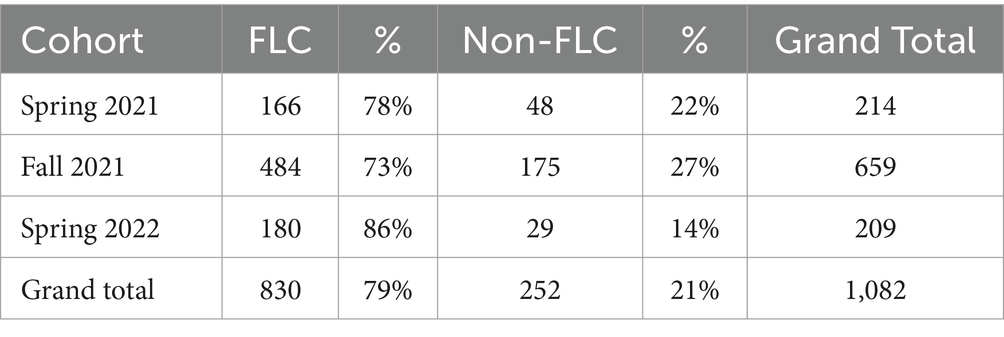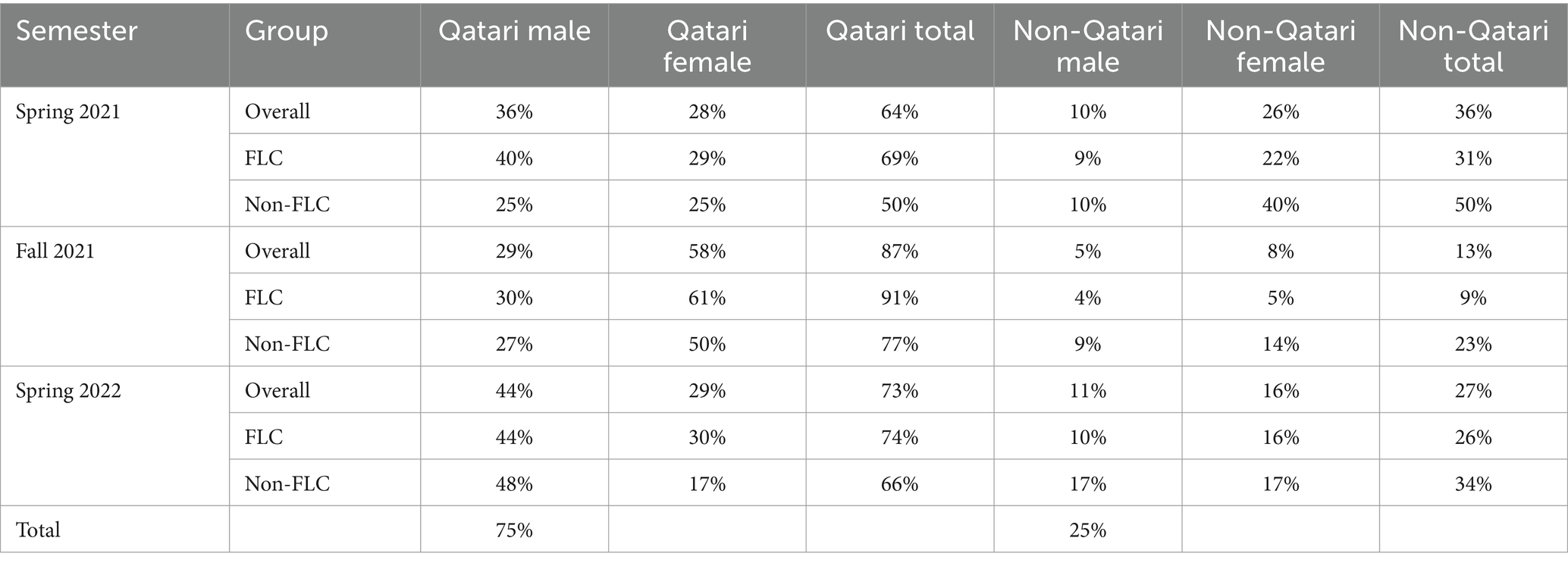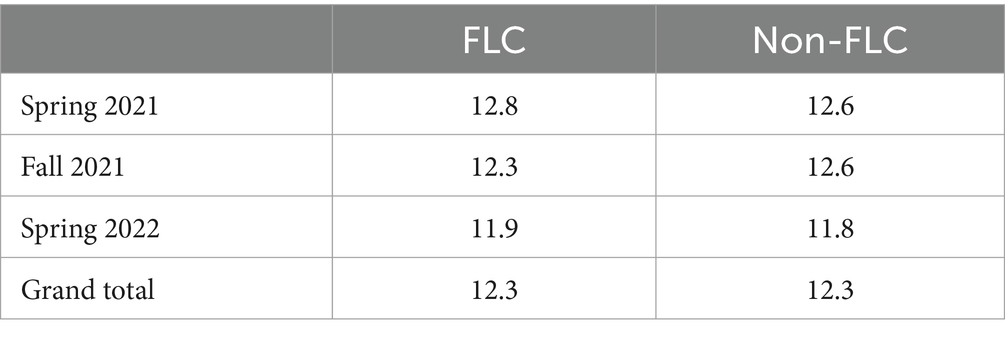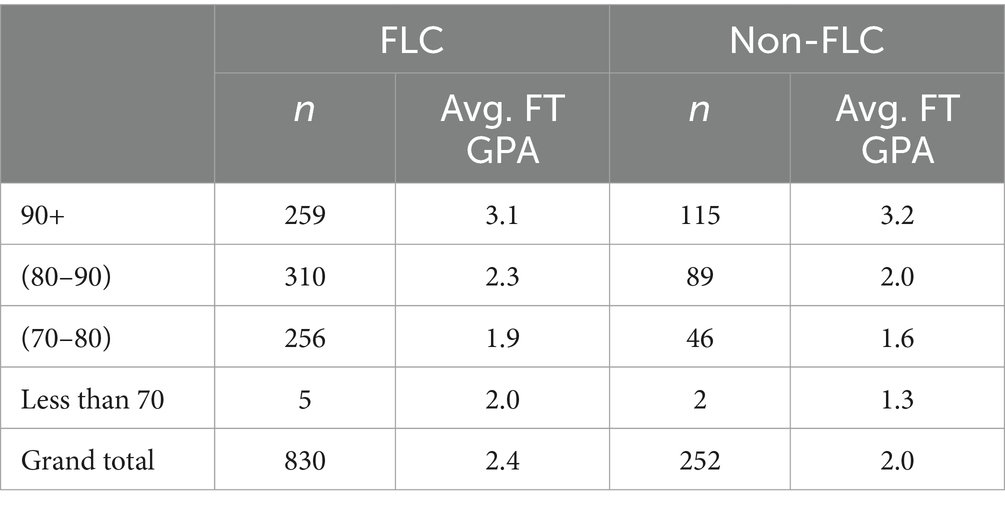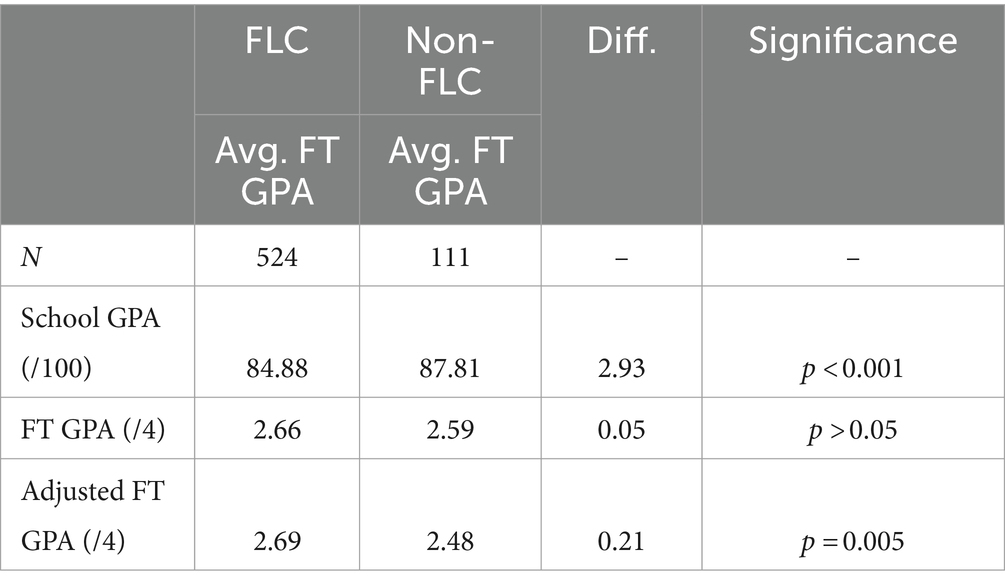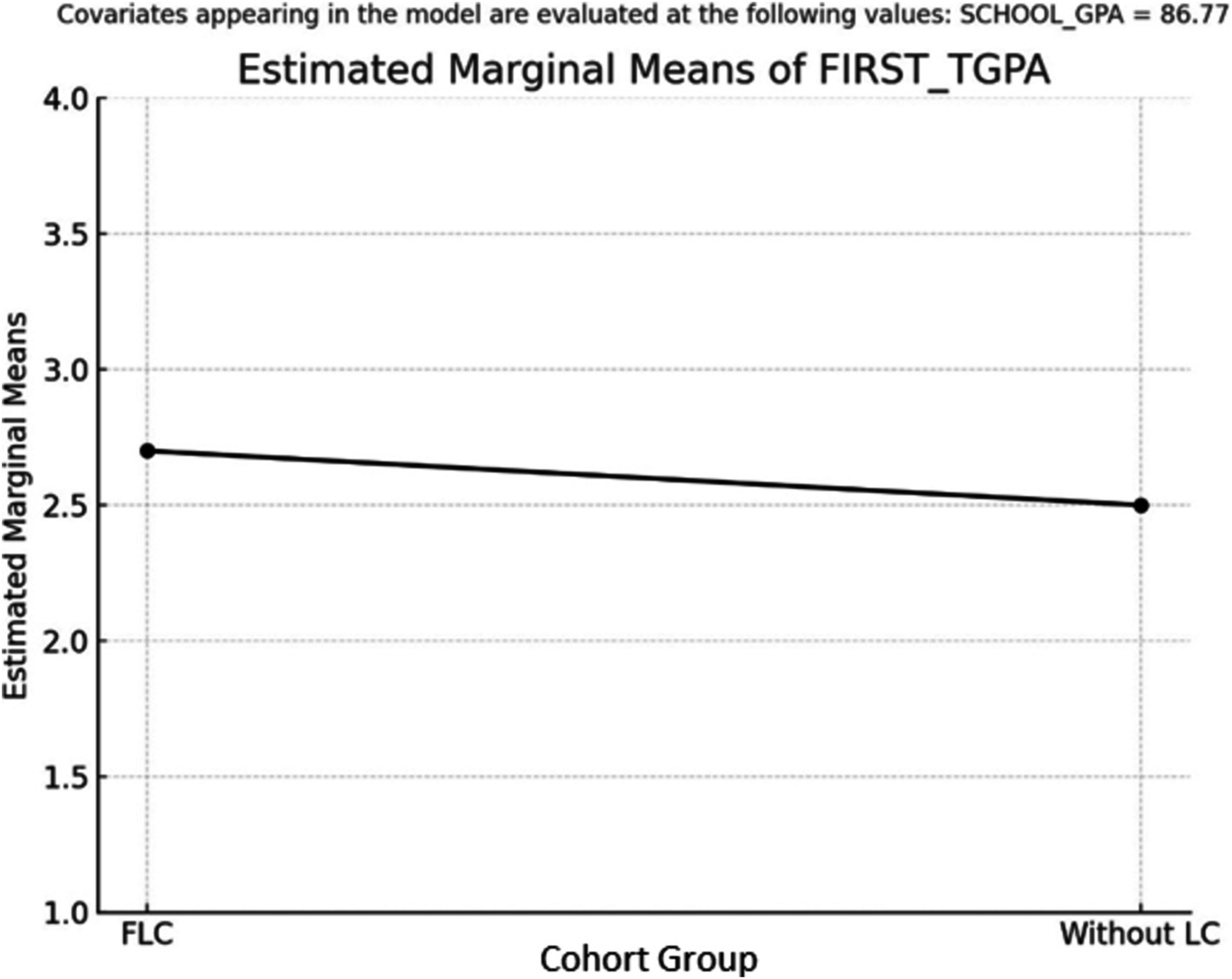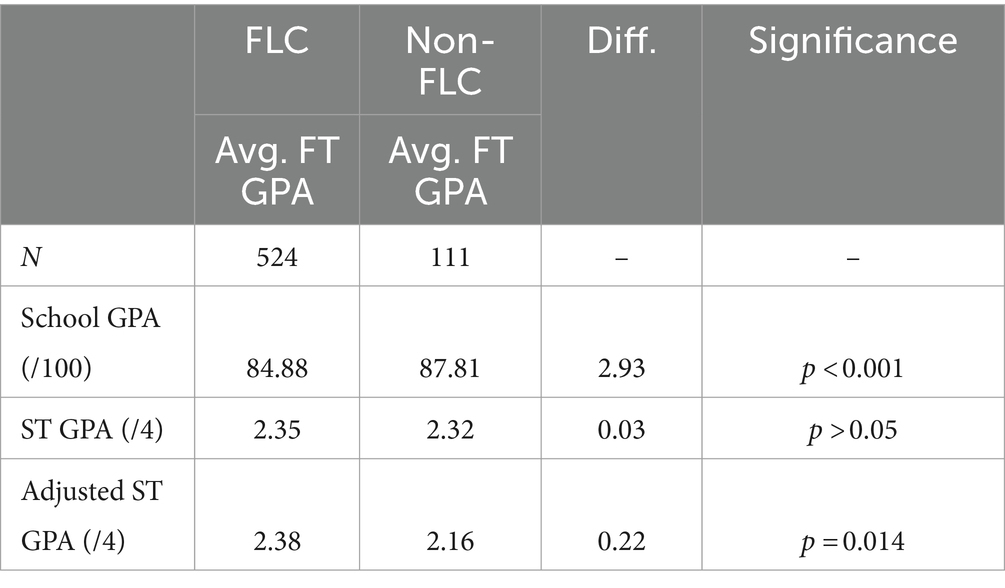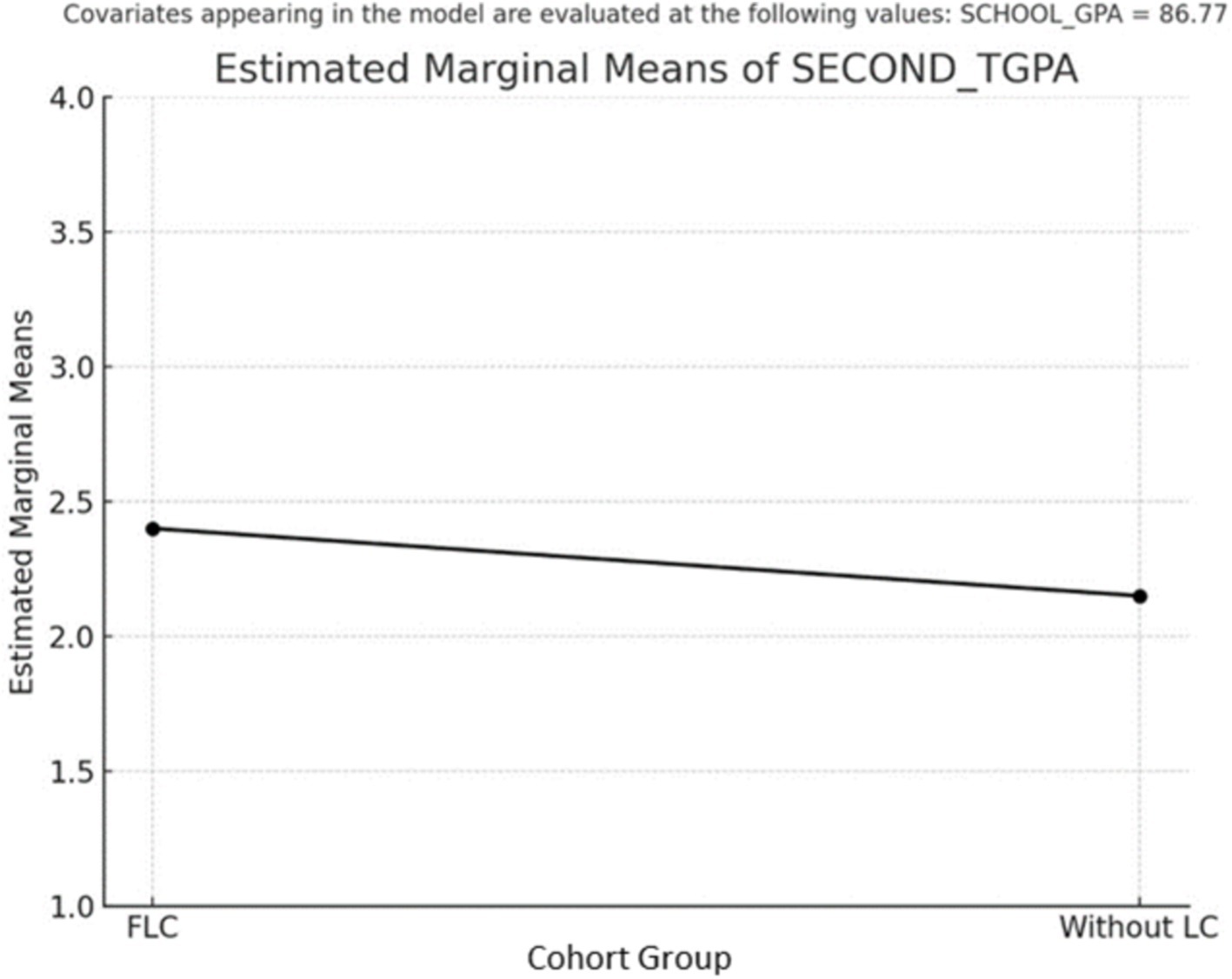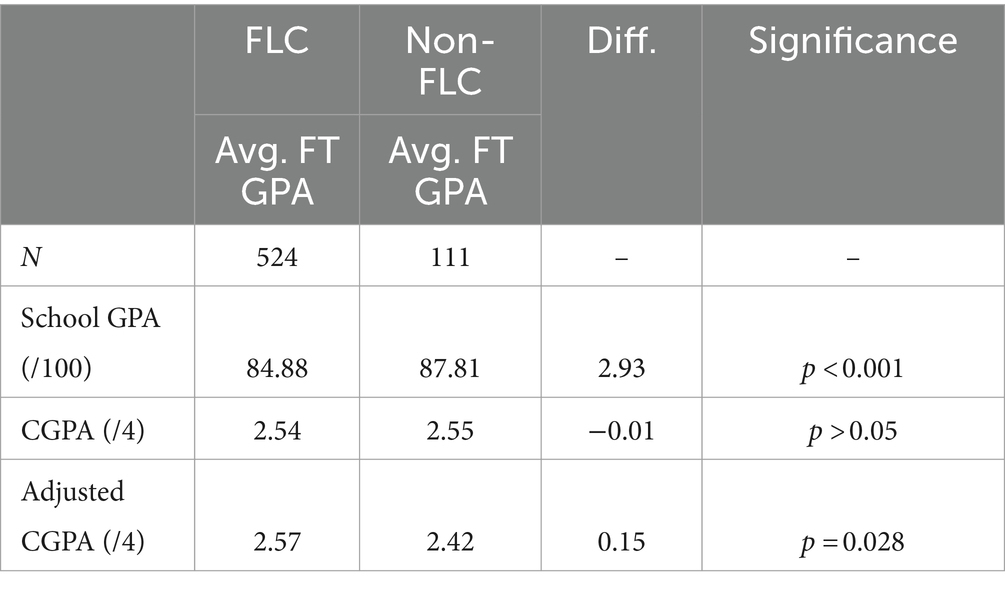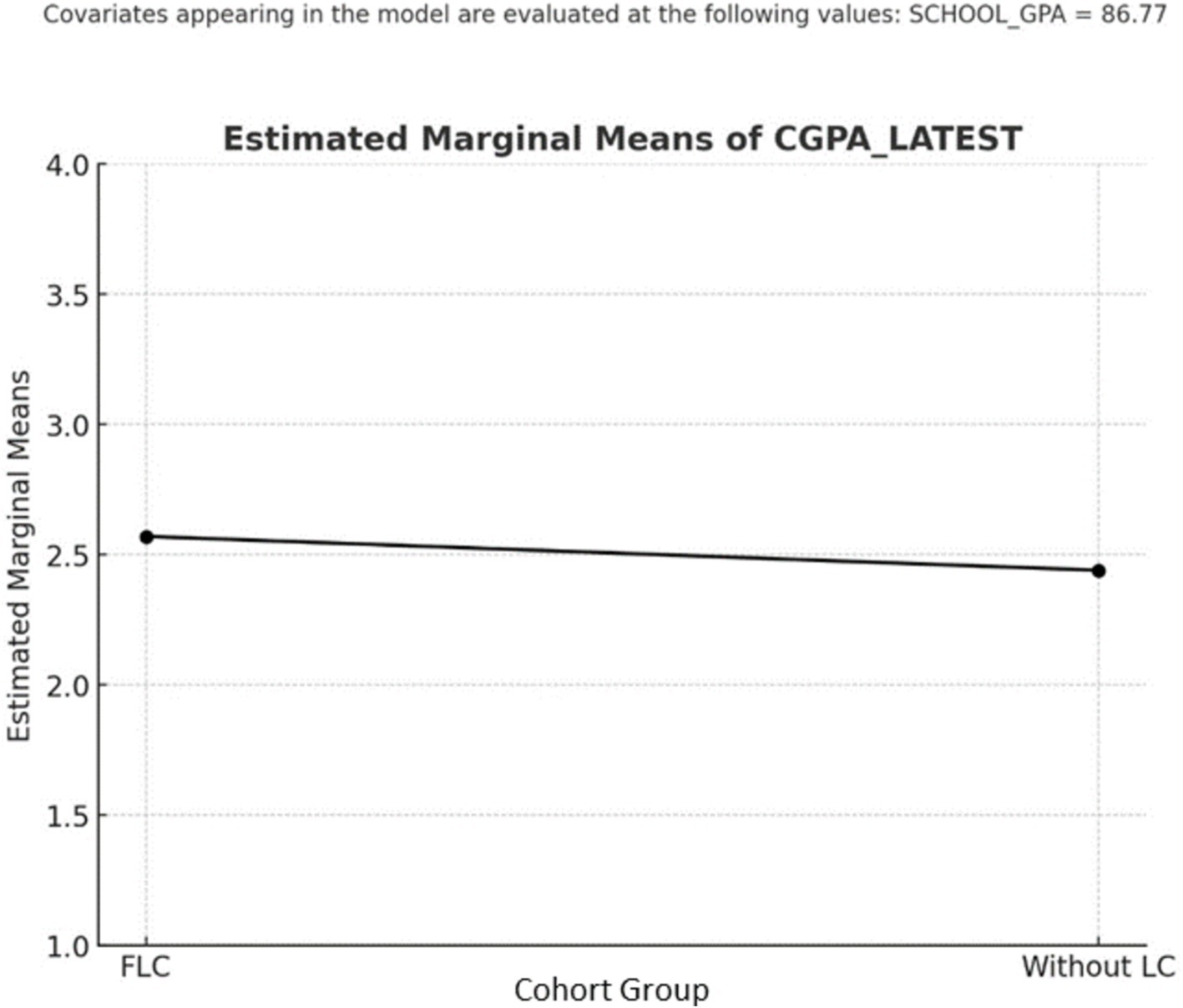- 1Core Curriculum Program, Deanship of General Studies, Qatar University, Doha, Qatar
- 2Office of Graduate Studies, Graduate Learning Support, Qatar University, Doha, Qatar
Introduction: The global issue of first-year student retention is a significant concern, generally associated with poor academic performance resulting from insufficient social and intellectual integration. Freshman Learning Communities (FLC) have arisen as a promising approach to tackle these difficulties. This study aims to assess the influence of FLC on the scholastic achievement of first-year undergraduate students.
Methods: The study utilizes quantitative research to determine if involvement in FLC has a favorable impact on academic performance by comparing the performance of students participating in FLC to those who are not part of the program. Descriptive and inferential statistical analyses, including t-tests and ANCOVA, were employed to identify significant differences between the two groups.
Results: Significant differences were identified, with findings indicating that students participating in the FLC exhibit superior academic performance, reflected in higher grade point averages (GPA). No significant difference was observed in registered and earned credit hours between FLC participants and non-participants.
Discussion: The results suggest that FLC participation is associated with improved academic performance, supporting FLC as a potential strategy to enhance scholastic achievement among first-year students.
Introduction
First-year undergraduate students have the highest attrition rates globally (Ang et al., 2019). One of the critical factors associated with this phenomenon is low academic achievement, which is highly influenced by a lack of connection with peers, faculty, and support services on campus (Elobaid et al., 2023; Meyer and Marx, 2014; Mishra, 2020). According to research, “students are more likely to learn and persist if they are involved in an institution’s social and academic life” (Tinto, 1998, p. 2), with students who participate in learning communities receiving the academic help and social “glue” they need to thrive. Learning communities are referred to as high-impact practices (HIPs), they are used as a strategy to increase students’ retention and highly contribute to students’ success (Otto et al., 2015) by creating a positive student’s experience, including a strong sense of belonging, common purpose, community, and enhanced learning and teaching. Learning Communities refer to the arrangement of students who enroll in two or more courses together in higher education.
In order to better comprehend what they learn in other classes; students investigate what they learn in one subject. Each learning community enrolls a limited number of students, usually no more than 25, to promote community building and allow students and faculty to connect at a deeper level, which will consequently help make the transition to university smoother and more enjoyable (Blessinger and Anchan, 2015). A learning community, according to Schmidt and Graziano (2016), consists of two or more related courses, one of which is the First-year Seminar. These courses are taught by faculty members who coordinate the content of the curricula, incorporate assignments, and meet on a regular basis to work together on successful implementation and student learning outcomes.
Establishing Freshman Learning Communities (FLC) at Qatar University was an important milestone in promoting a positive first-year student experience as per the latest strategic plan (Qatar University, 2018). In 2019, a committee was formed with several key mandates: to develop and implement a holistic learning community plan at the university level that includes faculty and staff from both the Academic and Student Affairs sectors; to create and implement course-based learning communities for first-year undergraduate students; to develop a list of engagement opportunities for students to explore and experience different modes of learning outside the classroom; to create learning and social spaces across the university where students, faculty, and staff can work, study, gather, and interact comfortably in small groups, promoting a culture of collaboration and collegiality; and to establish virtual learning spaces that provide an online community for students to engage and connect.
To achieve this, the committee opted for the Learning Cluster model as it best suited the context of the environment. This model was applied to newly admitted first-year undergraduate students in two colleges, the College of Law (CLAW) and College of Business and Economics (CBE), providing a block registration including the following introductory courses that are required in student’s study plans—First-year Seminar (UNIV 100), Arabic Language 1 (ARAB 100) and English 1 (ENGL 110). Commonly, all students register for courses independently of one another; this process may, however, be complicated for newly admitted students unfamiliar with this new system. Hence, block registration smoothens the registration process, making it easier for students to register in one block consisting of three courses (which are required in their study plan), with the same group of students located in the same building and, most importantly, with just one click in the registration process. Additionally, the model includes joint assignments, projects, activities, and support.
Prior research has consistently highlighted the positive effects of learning communities on student success. Tinto (1998) and Kuh et al. (2013) demonstrated that students involved in learning communities tend to achieve higher retention rates and GPA, emphasizing the value of structured social and academic integration. Soldner et al. (2012) further emphasized that learning communities positively influence first-year students’ outcomes by fostering an inclusive, supportive environment. In contrast, other studies, such as Blalock et al. (2004), have found more mixed results, suggesting that not all students benefit equally from learning communities, with some showing minimal academic improvement. While learning communities are trendy in the West, particularly in fostering a positive student experience in top universities in the United States such as Yale University (2023), this practice is still not widespread in the Arab world. Moreover, little is known about their impact on students’ achievement. This paper aims to fill this gap by answering the following research questions: How does FLC participation impact first-year undergraduate students’ academic performance reflected in GPA? How does FLC participation impact first-year undergraduate students’ registered and earned credit hours? Following a quantitative approach, this paper examines more specifically the impact of FLC experience on students’ performance by comparing FLC students to those who were not part of the experience (non-FLC students) after completing their first-year across three cohorts, spring 2021, fall 2021 and spring 2022. We used descriptive and inferential statistical analysis to measure the impact on students’ GPA, registered credit hours, and earned credit hours by comparing different variables, including high school GPA (HS-GPA), cohort group, gender, and nationality by using t-test, and ANCOVA tests to identify statistically significant differences. In sum, this study makes a scholarly contribution at both a regional and international level by shedding light on the impact of implementing learning communities on students’ performance at university level. The following section introduces prior literature on learning communities. Next, we describe our methods and data, retrieved from institutional reports and the statistical analysis applied. Finally, we present the results showing the impact of FLC and conclude with implications for policy and practice.
Literature review
The concept of learning communities in higher education has evolved significantly, reflecting shifts in educational paradigms and societal needs. These communities emerged as a solution to the depersonalization of the educational experience in large institutions, promoting integrated and holistic learning (Lenning and Ebbers, 1999). By fostering collaboration and interdisciplinary learning, learning communities have shown to improve student engagement, retention, and academic achievement. This is particularly relevant to our study, as our research seeks to evaluate how participation in Freshman Learning Communities (FLC) enhances academic performance by creating an environment that promotes deeper connections between students, faculty, and course material. This literature review will explore the history and evolution of learning communities, it will then discuss the importance of learning communities, components and types of learning communities. Finally, it will examine the implementation and challenges of learning communities.
History and evolution of learning communities
In the second half of the 20th century, particularly in the United States, learning communities became popular as educational institutions looked for creative solutions to solve common issues in higher education, such as student retention, engagement, and academic achievement (Tinto, 1998). The initial iterations of the models primarily emphasized the connection of courses, or the grouping of courses based on a particular theme. This approach encouraged a more interdisciplinary learning method, where students would enroll in courses centered around a common theme or problem (Smith et al., 2009).
Learning communities have recently undergone additional development to include advancements in technology and pedagogy, with the advent of online and hybrid learning communities having facilitated the dissolution of geographical limitations, enabling a more comprehensive array of students to partake in collaborative learning opportunities. Moreover, modern models progressively acknowledge the significance of inclusivity and diversity, guaranteeing that these communities are accessible and advantageous to all students, irrespective of their background (Soldner et al., 2012).
Global institutions have started to embrace and adapt the learning community model, acknowledging its capacity to improve both academic performance and student welfare, as well as foster institutional loyalty. The development of these learning communities demonstrates an increasing comprehension of the intricate learning process and the significance of creating environments that facilitate students’ collaborative interaction with their peers and instructors in meaningful and transforming manners (Rendón et al., 2000).
Importance of learning communities
Learning communities have gained traction as a first-year student success method ever since the publication in 2013 of Kuh and O’Donnell’s High-Impact Educational Practices. Because of their link to student persistence, learning communities and first-year seminar programs are becoming increasingly common in higher education (Tinto, 1998). Young and Hopp' (2014) found that first-year seminars are the most prevalent type of first-year experience, accounting for 90% of reports from four-year colleges and 80% from two-year institutions while, according to Barefoot et al. (2012), learning communities are available during the first year at around half of colleges and universities. To offer learning communities, 58% of colleges combine a seminar course with two or more other courses in the first year. The following are student-centered strategies to improve student success: learning communities, integrated programs, and first-year seminars. Numerous research has shown that learning communities have improved students’ academic performance, retention rates, and comprehension and utilization of learning resources (Caviglia-Harris, 2022; Mitchell and Soria, 2016; Rima et al., 2019).
Components and models of learning communities
Critical components and traits of successful learning community activities are recommended by a review of the academic literature (Kuh et al., 2013; Schmidt and Graziano, 2016). The following are examples of advanced learning communities, according to the findings:
• Students must devote a substantial amount of time and effort over an extended period of time, and performance expectations are set at adequately high levels.
• Discussions on important issues with classmates and teachers.
• Diversity of experience.
• Timely, regular, and helpful feedback.
• Regular, planned chances to integrate learning and reflection.
• Possibilities to see how learning is applicable in the actual world.
• Exhibiting proficiency in public (Baier et al., 2019).
It is challenging to evaluate the efficacy of learning communities due to the wide variations in their configurations (Schmidt and Graziano, 2016; Smith et al., 2009; Tapscott and Williams, 2006). According to Soldner et al. (2012) and Floyd et al. (2023), learning communities can coordinate or team-teach courses, enroll smaller cohorts from large enrollments, pair or cluster courses, enroll specific populations of students (major-specific, at-risk), or integrate curriculum with residence life. To align broader programs, scholars have classified the characteristics of learning communities into distinct groups.
Five primary models of learning communities were identified by Gabelnick et al. (1990): linked courses, learning clusters, first-year interest groups, federated learning communities, and coordinated studies. Models known as linked courses link two or more courses in which instructors collaborate to share content that is similar from the standpoint of their respective academic disciplines. Although they couple two or more courses with the same concept, learning clusters do not work together as effectively as linked courses do. First-year interest groups are not your usual academic learning communities; instead, they are student-centered, with a focus on residential living qualities. A first-year seminar course is incorporated into a learning community model of connected courses through the federated learning community paradigm. Last but not least, the linked course model is applied throughout a student’s whole semester calendar in the coordinated studies learning community model. Figure 1 displays several learning community models.

Figure 1. Learning community models adapted from Tinto (1998).
Scholars studying learning communities have endeavored to identify the distinctions among distinct learning communities. According to Visher et al. (2012), thriving learning communities follow four distinct dimensions: curricular integration as the main focus, courses that are linked, the provision of extra support services, and the targeted subject. A distinct learning community consists of courses that link particular and targeted disciplines and sets goals for students to integrate their learning across areas. In certain instances, the learning community could include university resources to support students’ in-depth engagement with campus life.
Implementation and challenges of learning communities
According to Gabelnick et al. (1990), learning communities function best when their content is closely connected across two or more relevant courses. Furthermore, different levels of success were found by Visher et al. (2012) in connecting courses, content, and procedures. There are three stages of integration: basic, intermediate, and advanced. Only members of the learning community are enrolled in related courses offered by the best learning communities. They are organized by faculty members who schedule many meetings during the semester to coordinate their curricula, communicate themes or assignments, and incorporate community support for students.
The program for learning communities is best described by the federated learning community model, which has more recently been referred to as the FYS/LC model (Schmidt and Graziano, 2016). In this strategy, a first-year seminar taught by faculty members who prioritize curricular integration and campus assistance is paired with one or more courses.
Learning community teams should establish primary learning outcomes at the start of the semester in order to support learning experiences through assignment designs. They should also get together once a week to talk about how each course will advance the learning community objectives in the upcoming class sessions. Students should be able to show mastery of the competencies and outcomes chosen at the start of the semester by the faculty members of the learning community. It would be possible to raise awareness of the learning community’s goals by asking faculty members to use the skills in their final semester presentations for the first-year symposium.
When creating Team Integration Plans (TIPs), some of the following ideas could be implemented: the TIPs would ask learning communities to identify roughly five key learning community outcomes, give explanations of activities and assignments that would help students grasp those ideas, and develop a method for evaluating how well students integrated the learning community outcomes. Furthermore, an individual would be chosen by each learning community to serve as the “Learning Community Team Coordinator.” Completing the TIPs, supervising the creation of assignment descriptions, and controlling the formal and informal evaluation of the chosen core learning goals are some of these duties (Hawkinson, 2019).
The Tetrad LC Model, as an example of learning communities, includes four courses: two core curriculum courses (e.g., psychology, political science, or history), a music course, a first-year writing course, and a first-year seminar (Hawkinson, 2019). Huerta (2004) found that learning communities that included three courses rather than four had higher levels of intellectual engagement and student learning. The most popular format is still the three-course variant, known as a triad and is shown in Figure 2. It consists of general education courses like psychology, political science, or history combined with a first-year seminar and first-year writing or communication.
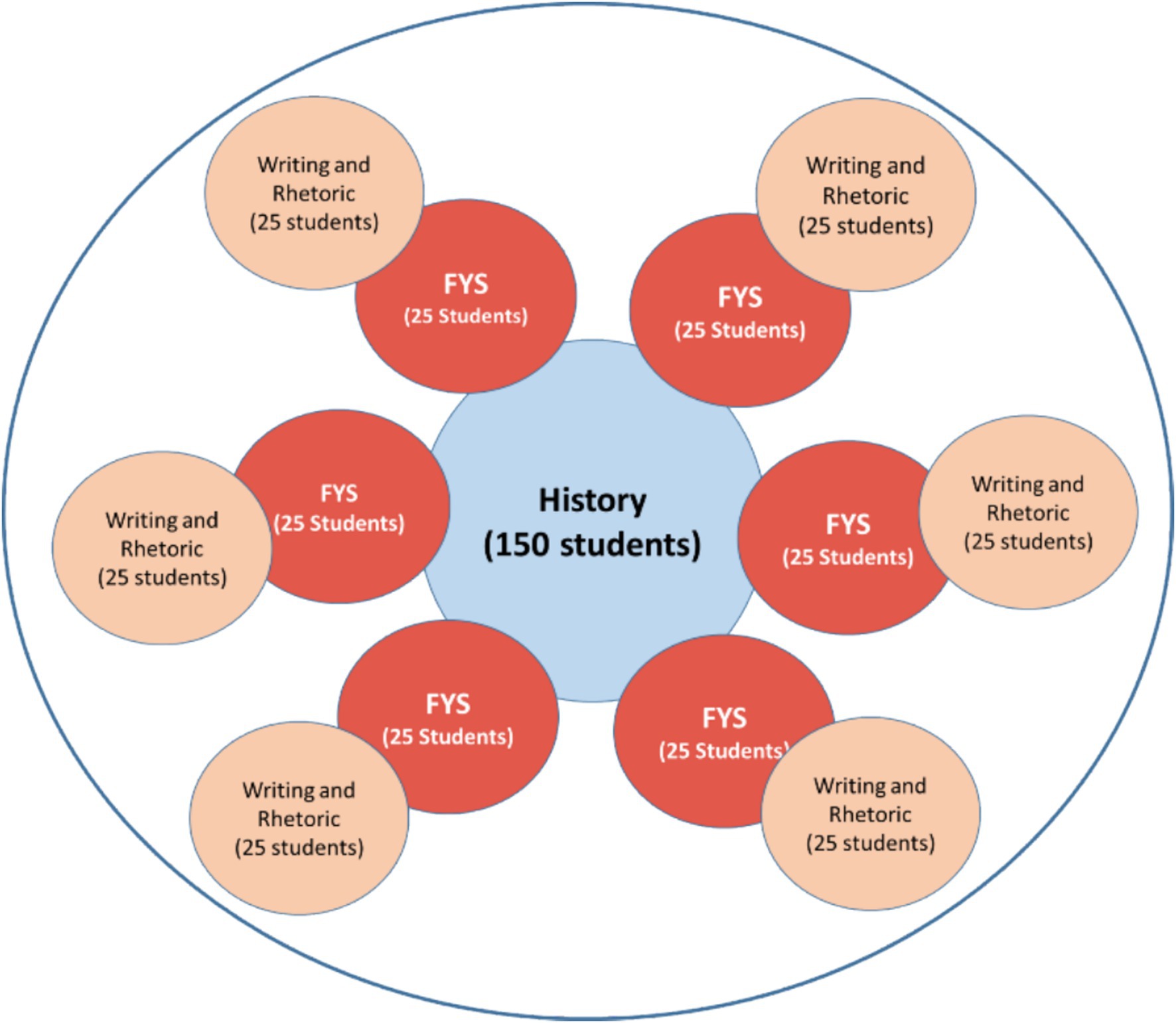
Figure 2. General education history learning community model (Hawkinson, 2019).
As shown in Figure 3, a different kind of learning community is the dyad structure, in which students enroll in a single core curriculum course linked to a first-year seminar. Present initiatives aim to match two key curriculum courses -psychology and cinema and culture- with first-year seminars through integrated experiences in learning communities.
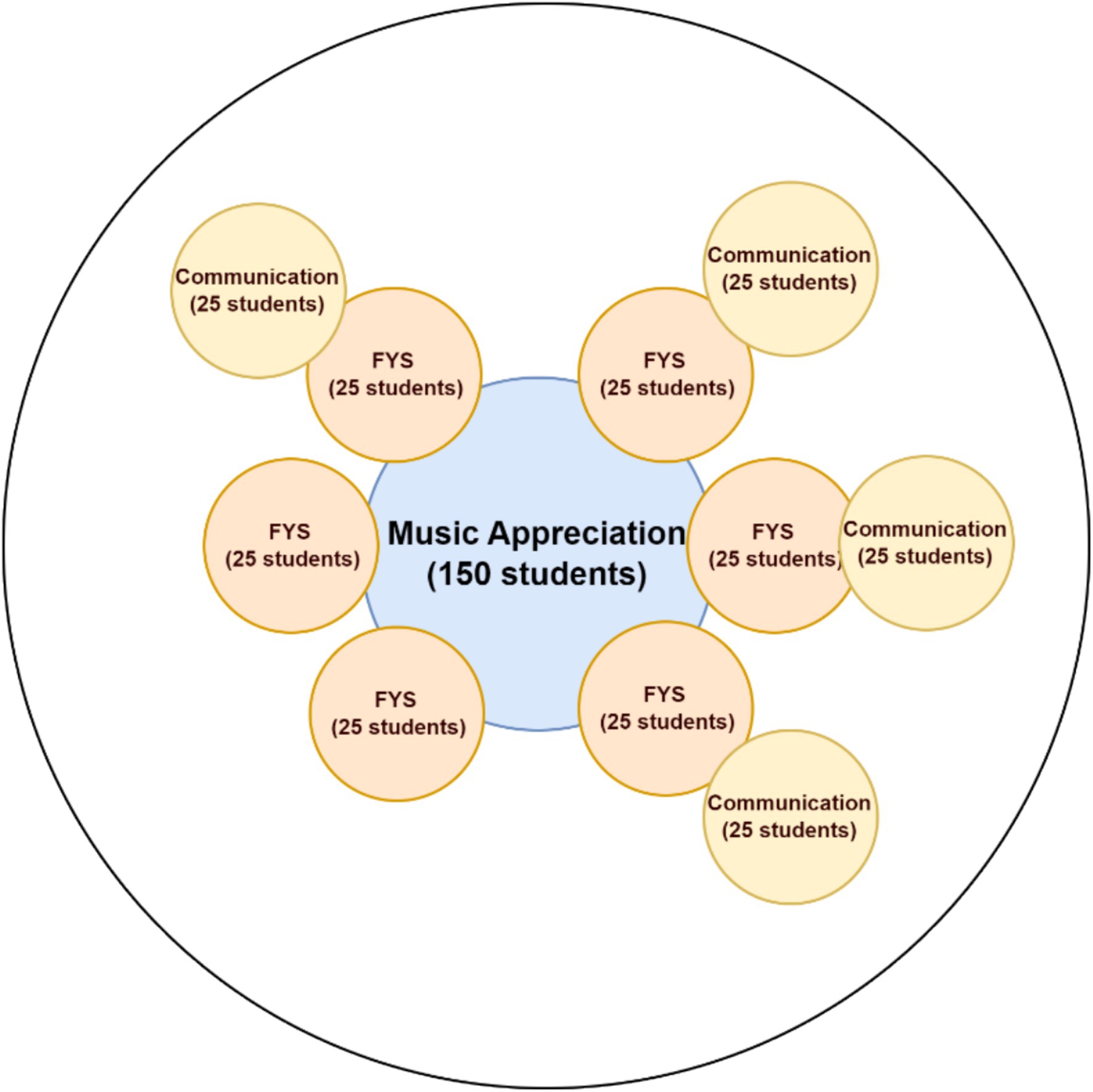
Figure 3. General education music appreciation learning community model (dyad and triad) (Hawkinson, 2019).
Certain learning communities cater to students according to their major or area of study. As an illustration, the pre-professional scientific learning community, shown in Figure 4, adheres to the traditional learning community model with its two core curriculum courses, chemistry and biology, as well as its linked labs, first-year seminar, and first-year writing or communication. Enrollment in these learning communities requires students to have a passion for a science-related field (Hawkinson, 2019).
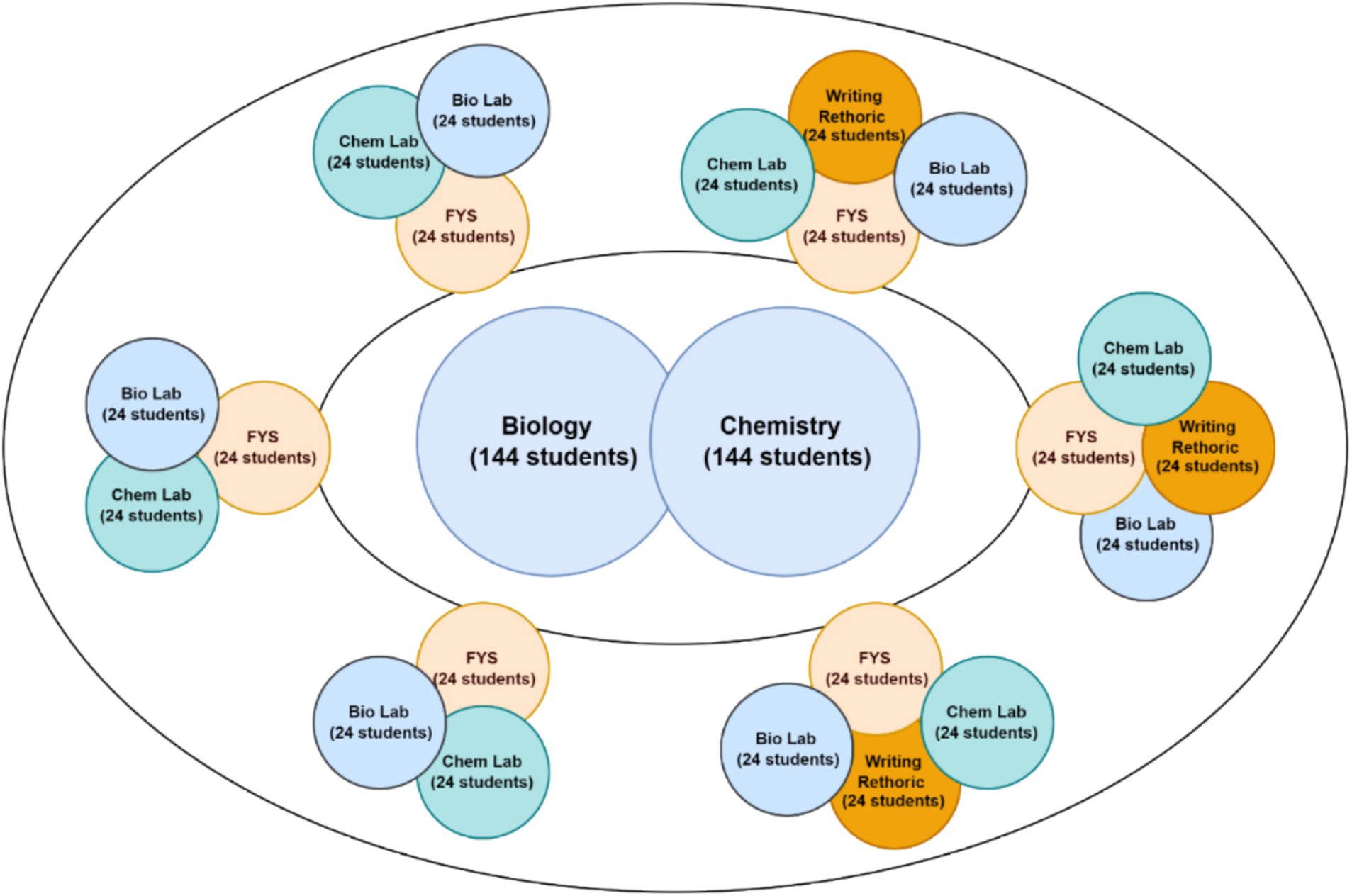
Figure 4. Major-specific pre-professional science learning community model (Hawkinson, 2019).
More recently, learning communities including courses in anatomy and physiology, first-year writing or communication, and first-year seminar have been added for nursing majors. Major-specific courses have also been added in an effort to provide students with an early understanding of the field they plan to pursue. According to Complete College Georgia (2017), first-year students who enroll in at least nine hours of coursework related to their selected major are more likely to graduate from the university. First-year writing, chemistry, engineering, and first-year seminar are among the learning communities for engineering students. Learning community hybrids, as shown in Figure 5, are created, at the very least, by combining the standard core curriculum concept of learning communities with elements of the first-year seminar reserved for certain majors, like theatre or kinesiology.
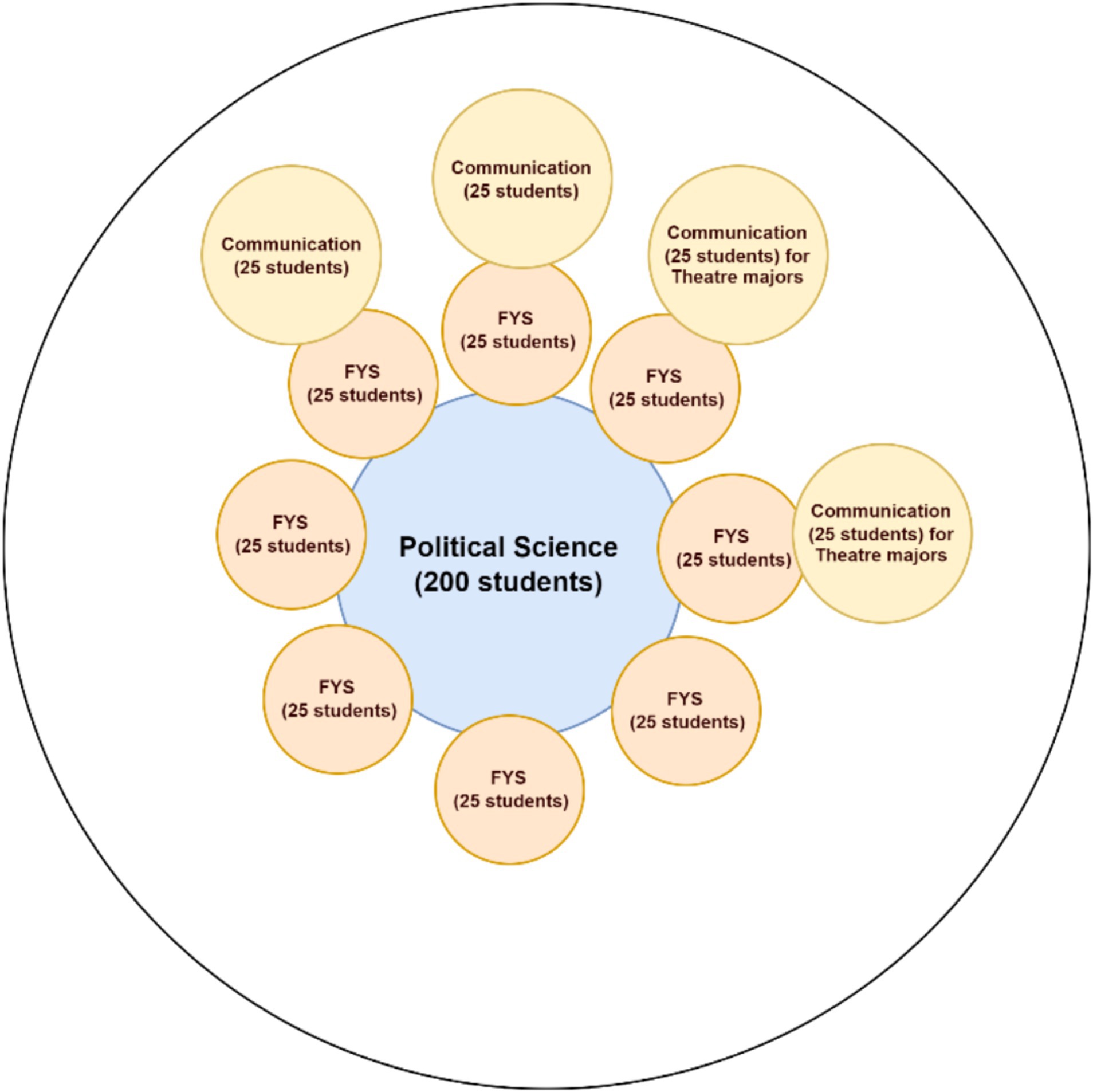
Figure 5. Major-specific theatre section in a political science learning community model (Hawkinson, 2019).
Additionally, learning communities are created with particular student groups in mind. According to Hawkinson (2019), developmental learning communities incorporate a core curriculum course, such as psychology, a first-year writing course, a first-year seminar, and an additional developmental math’s course. This is in line with the traditional approach.
According to Hawkinson (2019), several challenges may be encountered while implementing learning communities:
1. Conflicts of instructors’ schedules and meeting times.
2. Faculty load and responsibilities.
3. Schedule and logistics issues. Student personality and scheduling conflicts may arise.
4. Students may prioritize socializing above academic work.
5. Because the teaching-learning process is more difficult in LCs, students must exhibit greater maturity and make the switch from solitary to group learning.
The above-reviewed studies contributed to shaping the implementation of the LC model at QU, which was based on best practices in world-ranked universities and included institutional and local needs. The upcoming chapter will provide further details on the applied model.
Methodology
Research design
Our research applied a quantitative approach to inspect and explore the differences between FLC students (treatment group) and non-FLC students (control group) in academic performance as an impact of the Freshmen Learning Committee experience, which is considered a non-random assignment.
Consequently, taking two justifications into account, quasi-experimental was the appropriate quantitative research design for our study. The first justification is that the FLC category was not grouped randomly, but rather grouped to include newly admitted first-year students (excluding transferred and re-registered students). Students were selected from the College of Law (CLAW) and College of Business and Economics (CBE) following the Arabic track (Arabic as a medium of instruction), excluding those following the English track. The second reason for adopting the quasi-experimental approach is that the FLC treatment group benefited from the FLC experience, which means having non-random assignments. The non-random assignment includes several benefits from the FLC experience, including curricula integration by joining three courses (UNIV100, ENG110, ARAB100), allowing joint course work between the three courses, also offering students specially designed co-curricular activities developing transferable skills and directly linked to academic topics in each of the three joined courses. It is worth noting that since UNIV100 and ARAB100 courses are taught in Arabic language, the cohesion within the curriculum of these two courses exhibited a more robust integration than the third course (ENG110). In addition to curricula integration, students were asked to complete an E-portfolio reflecting their FLC experience, which helped them to critically assess and reflect on their academic work by making connections among different courses, assignments, and other activities. Moreover, students accessed the FLC club, which aimed to deliver one-on-one support, especially to at-risk students, promoting student learning and success and enhancing peer-to-peer and faculty-student interactions.
The control group comprised non-FLC students who adhered to similar selection criteria as the FLC group, newly accepted first-year students from the College of Law and the College of Business and Economics on the Arabic track. The control group neither participated in the FLC experience nor received the integrated curriculum, co-curricular activities, or admission to the FLC club. The control group was incorporated to facilitate a meaningful and representative comparison, isolating the influence of the FLC experience on academic achievement. The study attempted to evaluate whether the FLC experience influenced academic performance results between FLC participants and their non-FLC counterparts by upholding uniform criteria for both groups.
Participants
The sample included (1082) participants from first-year newly admitted/registered students in spring 2021, fall 2021, and spring 2022. The sample excluded transfer, second bachelor, and re-admitted students. The Freshman Learning Communities (FLC) experience was designed to integrate students academically and socially.
As mentioned earlier, FLC participants were enrolled in three core courses—First-year Seminar (UNIV100), Arabic Language 1 (ARAB100), and English 1 (ENGL110)—through block registration, allowing them to attend all classes with the same peer group. Joint assignments, as discussed above, were incorporated across these courses, fostering interdisciplinary collaboration. Additionally, students engaged in co-curricular activities aimed at developing skills such as teamwork and communication. Mentorship was provided through the FLC club, offering one-on-one support, particularly for at-risk students, to ensure academic and social success. All students were notified of their participation in the (FLC) to ensure transparency and promote active involvement in collaborative learning endeavors.
Table 1 demonstrates the profile of students included in this study by cohort. It shows that, on average, 79% of the population participated in the FLC experience.
The FLC category is the experimental group, defined by registered students in CLAW and CBE in spring 2021, fall 2021, and spring 2022. The total number of FLC group for the three semesters is 830 students, of which 601 (72% from FLC population) are from CBE, while 229 (28% from FLC population) are from CLAW.
The non-FLC category is the control group, defined by registered students in spring 2021, fall 2021, and spring 2022 in CLAW and CBE. The total number of non-FLC group in the three semesters is 252 students, of which 200 (79% of the non-FLC population) are from CBE, while the other 52 (21% of the non-FLC population) are from CLAW. This intended selection ensures a representative and valid comparison.
The study’s population consisted of first-year students from the College of Law (CLAW) and the College of Business and Economics (CBE) at Qatar University, observed over one semester. A total of 1,082 students participated, with 830 in the FLC group (treatment group) and 252 in the non-FLC group (control group). The participants were newly enrolled students in the Arabic track. The eligibility criteria included first-year status and enrolment in the UNIV100, ENG110, and ARAB100 courses. Transfer and re-registered students, along with those enrolled in the English track, were excluded. A purposive sampling strategy was employed to ensure the population aligned with the study’s objectives.
Instrumentation and data collection
The main variable in our data is the student’s academic performance, measured by their GPA. Consequently, it was fundamental to collect it from a reliable source, namely the university data. The adopted method compared the academic performance of FLC and non-FLC students, considering similar characteristics for both groups (same colleges, first-year students, registered in similar courses, and high school graduation year). Statistical analyses using t-tests and ANCOVA were conducted to determine the differences in academic performance. This adopted data collection instrument and analysis allows reliability and relativeness to the research question.
Variables
The research will analyze the primary variable in our data, which is the student’s academic performance with different indicators, including registered and earned credit hours in the first term, second term, and cumulative GPA. Academic performance is operationalized through these indicators to provide a clear measurement. However, the research data contains other variables to help the research benefit from other factors during the comparison practice. The data include the age, high school GPA, nationality, gender, and college as categorical variables.
Table 2 demonstrates that the percentage of Qatari students (male and female) in both FLC and non-FLC categories during the three semesters represents 75%, while the non-Qatari is 25%, which shows that the population is predominantly from Qatari nationality. The Qatari FLC students from both genders represent 78%, while the non-Qatari from both genders represent 22%. The table also shows that female FLC and non-FLC, Qatari, and non-Qatari students represent 55%, while males represent 45% of the research sample.
Table 3 demonstrates the high school GPA and the average for FLC and non-FLC students for the three semesters.
Table 4 shows the high school GPA groups and averages for FLC and non-FLC students for the three semesters categorized by nationality (Qatari and non-Qatari) and gender (male and female).
Validity and reliability
A pilot phase was executed for the FLC experience before the program’s expansion to the study sample. This pilot phase ensured that the measuring instruments employed were robust, dependable, and capable of offering consistent data that fit with the study objectives.
A valid method for data collection has been adopted to ensure the research’s validity. The study aims to measure the students’ GPA, and the technique used for data collection is valid since they were obtained from the university data generated by its official internal system. This source is both reliable and genuine since it guarantees the accuracy of the academic performance data without the possibility of external interference.
To further strengthen the study’s reliability, the academic performance of FLC and non-FLC students was compared based on similar characteristics, including enrollment in the same colleges, first-year status, comparable course registrations and high school graduation year. This accounted for confounding variables and guaranteed that any observed changes in academic performance could be linked to participation in the FLC.
All students were informed of their involvement in the FLC to guarantee openness and promote active participation in collaborative learning endeavors. Furthermore, statistical methods, such as t-tests and ANCOVA, were utilized to examine disparities in academic performance between FLC and non-FLC students. These tests are esteemed for their dependability and strength in identifying substantial variances while regulating other factors. The application of these statistical methods guarantees that the results are both dependable and statistically correct.
Ultimately, to guarantee uniformity in measurement, the study adhered to established protocols for data collecting and analysis. The utilization of official university data and recognized statistical methodologies enhances the dependability and validity of the study, guaranteeing that the outcomes are both precise and reproducible.
Limitations and delimitations
Significant endeavors were made to achieve inclusive research aiming to explore the impact of the FLC experience on the FLC students’ GPA. However, due to practical circumstances during the COVID-19 pandemic, the FLC experience in the spring and fall of 2021 was not conducted entirely on campus, instead it was implemented in a hybrid approach, including online learning.
Results
The following section presents the results of the analysis conducted to assess the impact of Freshman Learning Communities (FLC) on students’ performance by comparing the performance of FLC students to those who were not part of the FLC experience (non-FLC students). We provide a comprehensive comparison of the two groups across several baseline characteristics, including credit hours, high school GPA, gender, and nationality. This approach ensures that any differences observed in academic outcomes can be attributed to FLC participation rather than pre-existing disparities between groups. By presenting these characteristics side by side, we establish a transparent and representative view of the study populations, which allows for a robust and accurate analysis of the FLC experience’s impact on academic performance.
As mentioned, this study addresses two key research questions: (1) How does participation in Freshman Learning Communities (FLC) impact first-year undergraduate students’ academic performance, as measured by GPA? (2) How does FLC participation affect first-year undergraduate students’ registered and earned credit hours?
To answer these questions, the results include descriptive statistics for both FLC and non-FLC students, as well as the outcomes of inferential statistical analyses, such as t-tests and ANCOVA, with the data satisfying ANCOVA assumptions as outlined by Leppink (2018), to evaluate the significance of the differences observed between the two groups.
In analyzing students’ academic performance, we will aggregate the spring and fall data. This is mainly due to the small size of the non-FLC students in spring 2021, in addition to the fact that 55% of them (non-FLC students in spring 2021) have HS GPA of 90 or more. This would make the comparison between FLC and non-FLC students for spring 2021 not fair and not reliable.
FLC impact on registered and earned credit hours
The tables offer a comprehensive overview of registered credit hours in the first term (FT), segmented by various factors. Table 5 delves into credit hours based on cohorts, distinguishing between FLC and non-FLC students. Table 6 provides insights into credit hours categorized by nationality and gender, examining the differences between Qatari and non-Qatari students and male and female students within both FLC and non-FLC groups. Table 7 explores credit hours based on high school GPA, shedding light on the distribution among different GPA ranges for FLC and non-FLC students. This analysis aims to capture the traits of credit hour registration in FLC experience across diverse student demographics and academic backgrounds.
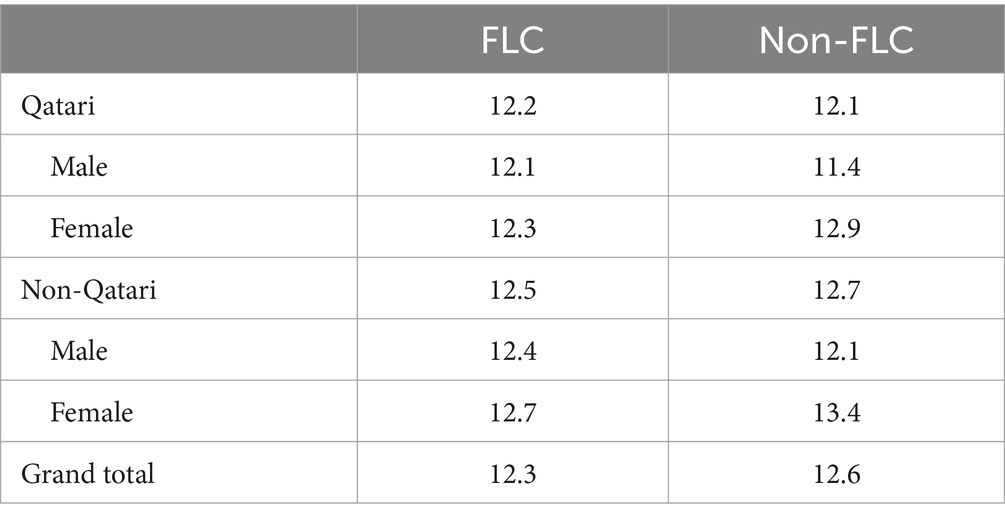
Table 6. Number of credit hours for FLC and non-FLC students categorized by nationality and gender for the three semesters.
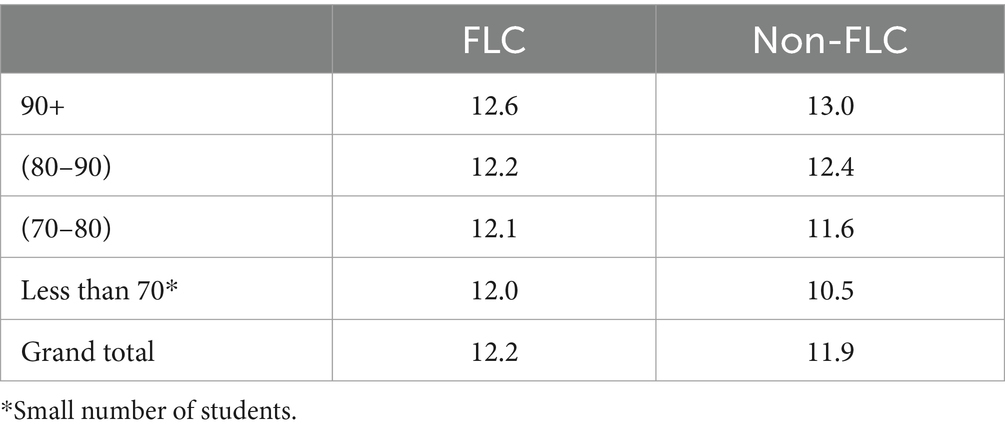
Table 7. Number of credit hours for FLC and non-FLC students based on high school GPA for the three semesters.
Based on the data provided in Tables 5–7, enrollment in FLC does not seem to have students registered in higher credit hours for most student groups. However, an exception is observed among students with a high school GPA falling between 70 and 79.9, where those with FLC experience tend to register a more significant number of credit hours compared to their counterparts without FLC involvement.
Learning communities typically aim to enhance the academic experience of first-year students through collaborative and structured activities. In light of this, the observation that FLC experience does not significantly correlate with higher credit hours for most cohorts aligns with the general understanding that learning communities may focus more on academic support and community building rather than directly influencing credit hour registration.
Tables 8, 9 comprehensively analyze the relationship between registered and earned credit hours during the first term of the FLC experience. In Table 8, the average of first term registered credit hours, the average of first term earned credit hours, and the corresponding differences are presented for both groups, FLC and non-FLC students, across three semesters (spring 2021, fall 2021, and spring 2022). This table provides insights into variations in credit hour achievements within each cohort.

Table 8. First term average registered credit hours and average earned credit hours for FLC and non-FLC students for the three semesters (by cohort).

Table 9. First term average registered credit hours and average earned credit hours for FLC and non-FLC students, categorized by nationality and gender for the three semesters.
Table 9 further dissects the data, categorizing them based on FLC and non-FLC status, nationality, and gender. It compares the average of first term registered credit hours and earned credit hours, highlighting the differences for Qatari and non-Qatari students, as well as male and female students within both FLC and non-FLC groups. This table highlights differences in credit hour outcomes, shedding light on the influence of FLC on these factors during the first term.
Overall, these tables contribute to understanding the dynamics between registered credit hours and earned credit hours across various student demographics in the initial term of the FLC experience. The data show no significant difference between FLC and non-FLC students in the grand totals of earned credit hours. The t-test results further confirm that the FLC experience has no statistically significant impact on earned credit hours, with a t-statistic of −1.21 and a p-value of 0.225, which exceeds the 0.05 significance threshold.
FLC impact on first term GPA
In the context of our study, it is essential to note that FLC is exclusively implemented for students during their first semester. Consequently, we have assessed the GPA for all cohorts throughout this initial semester to evaluate the impact of FLC on students’ GPA during this period.
The Tables 10–12 presented herein constitute an examination of students’ academic performance, differentiating between participants of FLC and those who did not partake in FLC experience. These tables investigate various facets, such as nationality, gender, high school GPA, and cohorts across multiple semesters. Through detailed analyses, the primary aim of these tables is to provide insights into the nuanced associations between these diverse factors and students’ academic performance as indicated by their first term GPA.
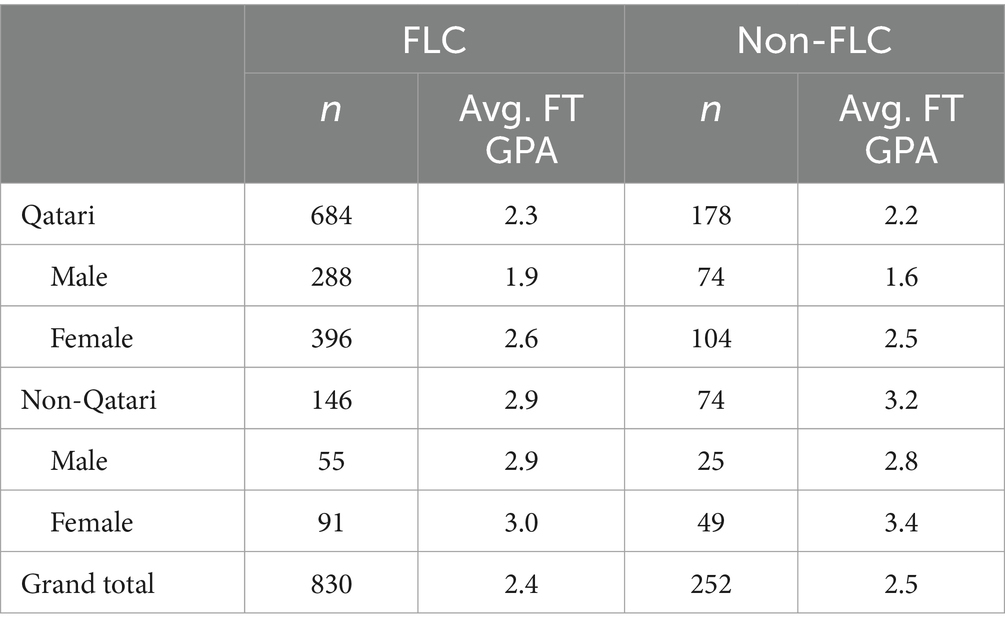
Table 10. First semester GPA for FLC and non-FLC students, categorized by nationality and gender, for the three semesters.
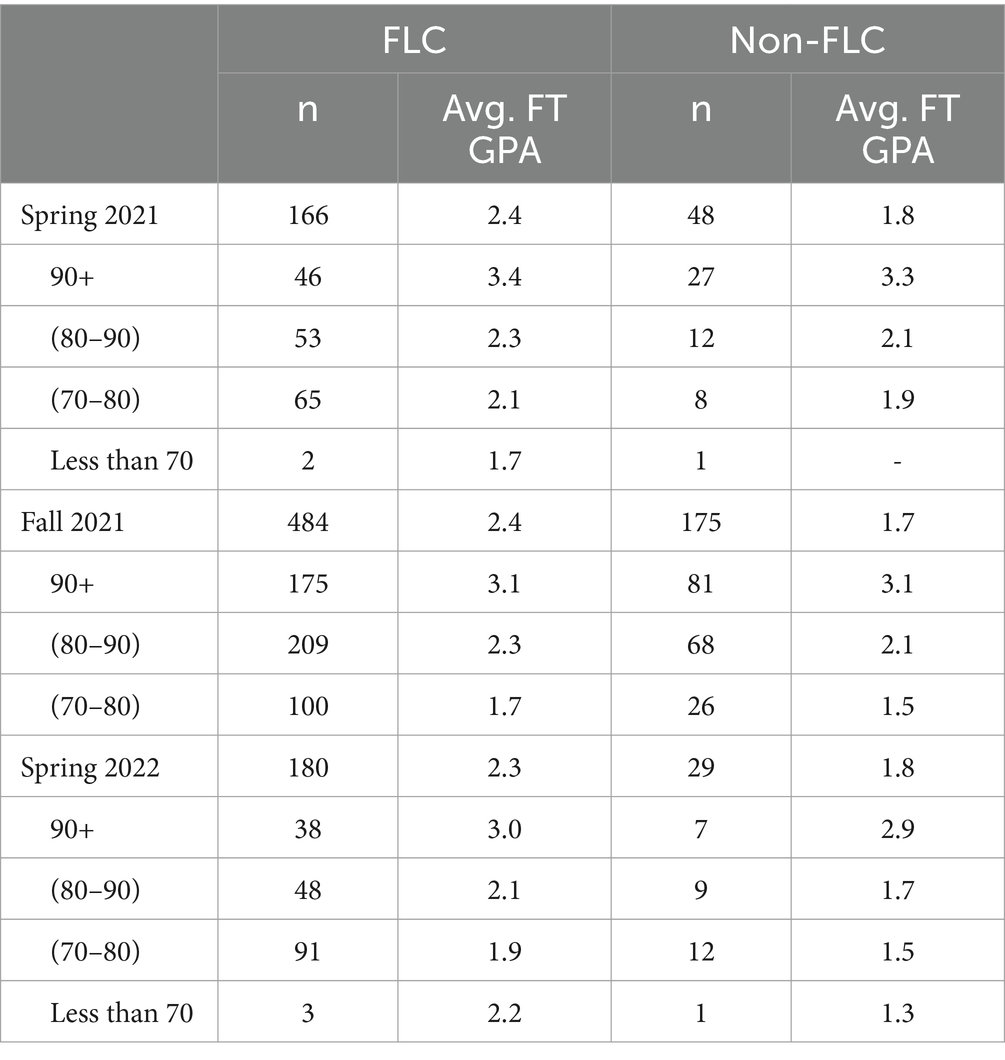
Table 12. Average first semester GPA for FLC and non-FLC students, categorized by high school GPA, for the three semesters.
By nationality and gender
Table 10 breaks down the students in FLC and non-FLC groups based on nationality and gender, providing the GPA for each subgroup and offering insights into how nationality and gender may correlate with academic performance.
In Table 10, when looking at students per nationality group, FLC students have a lower average FT GPA than non-FLC students in total.
By high school GPA group
Table 11 examines student performance based on high school GPA groups for FLC and non-FLC students. When looking at students per each high school GPA group, FLC students have a higher average first term GPA per each group.
By cohort
In Table 12, student performance is analyzed within each high school GPA group across multiple semesters (spring 2021, fall 2021, spring 2022). This table offers a detailed view of academic trends within each GPA range for both FLC and non-FLC cohorts, providing insights into how participation in FLC influences academic success across different cohorts. The analysis of student performance within each high school GPA group across multiple semesters demonstrates that FLC students consistently attain higher average GPA in each group.
In Table 13, analysis of covariance (ANCOVA) was employed to compare the academic performance of FLC and non-FLC students. The primary focus was to investigate the academic performance of both groups, with the students’ first term GPA serving as the dependent variable. The main objective was to discern statistically significant differences in the means of the dependent variable between the two groups while adjusting for the influence of the high school GPA, considered as a covariate though not of primary interest.
Upon examining the school GPA of the students, non-FLC students exhibit significantly higher GPA than their FLC counterparts (84.88 vs. 87.81); T-test statistics also indicate similar results with p < 0.001.
When examining students’ GPA in the first term, we observe no significant difference between non-FLC and FLC students, although the mean of non-FLC is higher based on t-test analysis.
However, when we factor in and control for the influence of school GPA, particularly considering its pronounced advantage for non-FLC students, a distinct finding materializes that FLC students achieved a first term GPA that was 0.21 points higher than non-FLC students, and this difference is deemed statistically significant. Figure 6 shows the output for the adjusted GPA.
FLC impact on second term GPA
Since FLC is exclusively applied in the first semester for students, a subsequent examination of their academic performance was conducted during the second semester. Table 14 presents the results of the ANCOVA test, employed to compare the academic performance of students who participated in FLC with those who did not during this subsequent semester.
Even though FLC experiences were limited to the first semester, the academic performance of the same cohort of students was examined using their second term GPA. This analysis aimed to explore the impact of FLC on academic performance among both groups, with the students’ second term GPA serving as the dependent variable.
As previously stated, when analyzing students’ high school GPA, non-FLC students show higher GPA compared to their FLC counterparts (84.88 vs. 87.81). The t-test statistics also affirm these findings, with a significance level of p < 0.001. The examination of the students’ academic performance in the subsequent term (second term GPA) revealed no statistically significant difference between FLC and non-FLC students despite the non-FLC mean being higher based on the t-test analysis.
However, when we factor in and control for the influence of school GPA (given that they are better for non-FLC students), FLC second semester GPA was higher by 0.22 points than non-FLC students as demonstrated by ANCOVA analysis, with the controlling variable being high school GPA. The accompanying Figure 7 shows the adjusted GPA output.
FLC impact on cumulative GPA
Finally, in Table 15, we examined the cumulative GPA for both FLC and non-FLC students to compare their overall academic performance after the completion of their first year.
To comprehensively assess students’ overall academic performance, an analysis of covariance was conducted on the cumulative GPA. The high school GPA was used as a controlling variable, considering that the high school GPA was better for non-FLC students. The results revealed that FLC students attained a cumulative GPA of 0.15 points higher than non-FLC students. This difference was found to be statistically significant. Figure 8 shows the output for the adjusted GPA.
FLC impact on UNIV100 and ARAB100 grades
Additional analysis was conducted on two specific courses, ARAB100 and UNIV100, to assess potential differences in performance between FLC and non-FLC students. The aim was to determine if there were any statistically significant differences in the final grades achieved by students in these courses. The justification for selecting these two courses to conduct this analysis is that both courses are taught in Arabic language, and the curriculum integration was more robust, including more connections with joint assignments. It was found that there is no statistically significant difference (p > 0.05) in the final grades between FLC and non-FLC students for both UNIV100 and ARAB100.
Discussion and conclusion
Learning communities are recognized to be among the most impactful practices that contribute to student success, significantly influencing students’ academic achievement, engagement, and learning outcomes (Kuh, 2008; Nosair et al., 2021; Qadhi and Alkubaisi, 2022). This paper aimed to examine the impact of FLC on credit hours, specifically, on students’ registered and earned credit hours, as well as academic achievement with students’ GPA, across three different cohorts after completing their first semester in FLC, compared to first-year students who were not enrolled in these learning communities.
Regarding the influence of the FLC experience on credit hours, using descriptive statistics and t-tests, the analysis reveals that participation in FLC does not significantly impact the number of registered credit hours, except for students with a high school GPA between 70–79.9%. This suggests that while FLC’s block registration may not influence credit hour registration for all students, it may provide specific benefits for lower-achieving students by ensuring they register for courses as per their study plan. Aligned with recent findings (Holt and Nielson, 2019), FLC participation is not correlated with greater earned credit hours. This indicates that FLC does not enhance earned credit hours among students, a conclusion that contrasts with Visher et al. (2012).
Importantly, on the influence of FLC on students’ GPA through ANCOVA analysis, when controlling the influence of high school GPA, FLC participation is statistically associated with higher first semester, second semester, and cumulative GPA. Further analysis across HS GPA groups and cohorts over multiple semesters shows that FLC students consistently outperformed non-FLC students. Despite lower HS GPA for FLC students, the findings suggest that the academic benefits of FLC emerge most clearly when considering pre-existing academic characteristics (in our case HS GPA), demonstrating a positive impact of FLC on students’ overall academic achievement which is consistent with previous research (Baier et al., 2019; Hernandez et al., 2022). Finally, no statistically significant differences were found in performance in the two assessed courses, ARAB100 and UNIV100, indicating that FLC’s impact may be more general rather than course specific. Additionally, since FLC students achieved a higher GPA they also outperformed non-FLC students in other courses. As the scope of this research did not include the investigation of the FLC impact on other courses, we recommend that future research explore this area further.
Overall, while FLC participation does not correlate with an increase in credit hour registration or a significant rise in earned credit hours, it is associated with higher levels of academic achievement, as reflected in students’ GPA. Together, the present findings confirm that FLC’s participation positively impacts students’ academic outcomes, with significant effects on first term, second term, and cumulative GPA, although no significant influence was observed on grades in specific FLC courses. Our findings are aligned with the findings of Tinto (1998) and Soldner et al. (2012), where students engaged in structured learning environments performed better academically. However, our study contrasts with Blalock et al. (2004), as we did not observe the limited academic improvements noted in their work.
Student success is central to the mission of higher education practitioners, making it crucial to adopt and adapt best practices that foster success within our local context, ensuring the selection of the most suitable model for our needs, in our case, the Learning Cluster model. As mentioned earlier in this paper, learning communities come in various forms, therefore institutions must thoroughly assess their specific needs to implement the most suitable model that effectively meets their goals.
Unsurprisingly, this quantitative research demonstrates that FLC participation had a positive impact on first-year undergraduate students’ performance. This suggests that being part of a learning community significantly supports student achievement, especially during the first year of university, a critical and pivotal phase in their academic journey (Kuh et al., 2006; Woosley, 2003).
Regarding limitations, the FLC experience was partially implemented during the COVID-19 pandemic, which significantly interrupted students’ experiences and prevented them from fully engaging in the learning community. Consequently, a longitudinal research design on implementing FLC in a face-to-face context may yield different results. Another limitation is the study sample, which primarily comprises of non-STEM (Science, Technology, Engineering, and Mathematics) students, therefore including participants from other colleges and programs, may lead to different results. Nonetheless, the findings of this research are relevant to higher education institutions globally, with particular significance for those in the Arab world that follow GPA and credit hour systems, offering valuable insights for policymakers by recognizing learning communities as a valuable approach for fostering academic success. Institutions should consider these benefits when designing initiatives. Additionally, institutions should actively promote these benefits to encourage student participation, ensuring they fully engage with and benefit from these learning communities.
The paper concludes by asserting that the FLC implementation was proven effective. Future research should explore its impact across different colleges. Additionally, beyond examining student achievement, future studies should investigate the impact of FLC on student retention, as well as assess student and faculty satisfaction, challenges, and needs. Equally important, future research could examine the relevance of curriculum integration within the FLC framework.
Recommendations for policy and practice include implementing learning communities throughout all stages of undergraduate education, not just for first-year students. We also suggest increasing community awareness through relevant programs, including training and workshops for faculty, to emphasize the importance of HIPs and to help build their knowledge and skills in applying these innovative methods. Additionally, we recommend incentivizing faculty members who fully engage with and effectively implement these best practices. Incentives could include financial rewards, as well as recognition through awards and coverage of professional development fees, among other possibilities. This study has significant implications for higher education institutions, particularly those in the region. The results indicate that fostering stronger peer-to-peer and peer-to-faculty connections is likely to enhance student achievement. Therefore, the importance of implementing HIPs, especially through learning communities, cannot be overstated.
Data availability statement
The original contributions presented in the study are included in the article, further inquiries can be directed to the corresponding author.
Ethics statement
This project has been approved by the Institutional Review Board (IRB) under approval number 2130623-1. Written informed consent from the participants was not required to participate in this study in accordance with the national legislation and the institutional requirements.
Author contributions
ME: Conceptualization, Data curation, Formal analysis, Project administration, Resources, Supervision, Validation, Investigation, Methodology, Writing – original draft, Writing – review & editing. MZ: Conceptualization, Data curation, Formal analysis, Project administration, Resources, Validation, Investigation, Methodology, Writing – original draft, Writing – review & editing. NK: Conceptualization, Data curation, Formal analysis, Project administration, Resources, Validation, Investigation, Methodology, Writing – original draft, Writing – review & editing. SQ: Conceptualization, Data curation, Formal analysis, Project administration, Resources, Validation, Investigation, Methodology, Writing – original draft, Writing – review & editing.
Funding
The author(s) declare that no financial support was received for the research, authorship, and/or publication of this article.
Acknowledgments
The authors thank Qatar University for supporting this research and providing the needed data.
Conflict of interest
The authors declare that the research was conducted in the absence of any commercial or financial relationships that could be construed as a potential conflict of interest.
Publisher’s note
All claims expressed in this article are solely those of the authors and do not necessarily represent those of their affiliated organizations, or those of the publisher, the editors and the reviewers. Any product that may be evaluated in this article, or claim that may be made by its manufacturer, is not guaranteed or endorsed by the publisher.
References
Ang, C.-S., Lee, K.-F., and Dipolog-Ubanan, G. F. (2019). Determinants of first-year student identity and satisfaction in higher education: a quantitative case study. SAGE Open 9:2158244019846689. doi: 10.1177/2158244019846689
Baier, S. T., Gonzales, S. M., and Sawilowsky, S. S. (2019). Classroom learning communities’ impact on students in developmental courses. J. Dev. Educ. 42:2.
Barefoot, B., Griffin, B., and Koch, A. (2012). Enhancing student success and retention throughout undergraduate education: a national survey. John N. Gardner Institute for Undergraduate Excellence. Retrieved at: https://www.jngi.org/wordpress/wpcontent/uploads/2012/04/jnginational_survey_web.pdf
Blalock, G., Harper, S. S., and Piker, A. (2004). “Welcoming the first class of first-year students with an integrated experience,” in Integrating the first-year experience: The role of first-year seminars in learning communities. ed. J. M. Henscheid (Columbia, SC: University of South Carolina, National Resource Center for The First-Year Experience and Students in Transition).
Blessinger, P., and Anchan, J. P. (Eds.) (2015). Democratizing higher education: international comparative perspectives. New York: Routledge.
Caviglia-Harris, J. L. (2022). Community is key: estimating the impact of living learning communities on college retention and GPA. Educ. Econ. 30, 173–190. doi: 10.1080/09645292.2021.1958167
Complete College Georgia (2017). University system of Georgia updates. Available at: https://completegeorgia.org/campus-updates-2017
Elobaid, M., Elobaid, R. M., Romdhani, L., and Yehya, A. (2023). Impact of the first-year seminar course on student GPA and retention rate across colleges in Qatar University. Int. J. Learn. Teach. Educ. Res. 22, 658–673. doi: 10.26803/ijlter.22.5.34
Floyd, A., Qadhi, S. M., Al-Thani, H., Chaaban, Y., and Du, X. (2023). An integrated systems model for understanding experiences of academic leadership development in Qatar. J. High. Educ. Policy Manag. 45, 690–705. doi: 10.1080/1360080X.2023.2225148
Gabelnick, F., MacGregor, J., Matthews, R. S., and Smith, B. L. (1990). “Learning communities: Creating, connections among students, faculty, and disciplines,” in New directions for teaching and learning. New Jersey, United States: Wiley.
Hawkinson, C. (2019). First-year seminar/learning community discoveries and dreams: an appreciative inquiry [doctoral dissertation, Texas a&M University—Corpus Christi]. ProQuest Dissertations & Theses Global. Available at: https://www.proquest.com/docview/2300270260/abstract/E7E7DE6C53174BC0PQ/1
Hernandez, R., Lou, J., Al-Omari, B., Aloum, L., Kanj, S., Ismaiel, S., et al. (2022). Implementation of learning communities at Khalifa University College of medicine and health sciences, Abu Dhabi, United Arab Emirates. Adv. Med. Educ. Pract. 13, 577–583. doi: 10.2147/AMEP.S360731
Holt, E. A., and Nielson, A. (2019). Learning communities and unlinked sections: a contrast of student backgrounds, student outcomes, and in-class experiences. Res. High. Educ. 60, 670–683. doi: 10.1007/s11162-018-9531-1
Huerta, J. C. (2004). Do learning communities make a difference? PS: Political Science & Politics 37, 291–296.
Kuh, G. D., Kinzie, J. L., Buckley, J. A., Bridges, B. K., and Hayek, J. C. (2006). What matters to student success: A review of the literature, vol. 8. Washington, DC: National Postsecondary Education Cooperative.
Kuh, G. D., O’Donnell, K., and Reed, S. D. (2013). Ensuring quality & taking high-impact practices to scale. Washington DC: Association of American Colleges and Universities.
Lenning, O. T., and Ebbers, L. H. (1999). “The powerful potential of learning communities: Improving education for the future,” in ASHE-ERIC Higher Education Report. Washington, DC : ERIC, 26.
Leppink, J. (2018). Statistical methods for experimental research in education and psychology. Cham, Switzerland: Springer International Publishing.
Meyer, M., and Marx, S. (2014). Engineering dropouts: a qualitative examination of why undergraduates leave engineering. J. Eng. Educ. 103, 525–548. doi: 10.1002/jee.20054
Mishra, S. (2020). Social networks, social capital, social support and academic success in higher education: a systematic review with a special focus on ‘underrepresented’ students. Educ. Res. Rev. 29:100307. doi: 10.1016/j.edurev.2019.100307
Mitchell, T. D., and Soria, K. M. (2016). “Seeking social justice: Undergraduates’ engagement in social change and social justice at American research universities,” in Civic engagement and community service at research universities: Engaging undergraduates for social justice, social change and responsible citizenship. London, UK: Palgrave Macmillan, 241–255.
Nosair, M. R., Qadhi, S., and Hendawi, M. (2021). Evaluating preparatory programs and novice teachers teaching performance and its influence on students’ learning process in Qatar university. Educ. Admin. Theory Pract. 27, 1133–1149. doi: 10.17762/kuey.v27i3.258
Otto, S., Evins, M., Boyer-Pennington, M., and Brinthaupt, T. (2015). Learning communities in higher education: Best practices. Journal of Student Success and Retention 2, 1–20.
Qadhi, S., and Alkubaisi, H. (2022). “Teachers’ education in Qatar: devolution and decentralization,” in Handbook of research on teacher education. ed. M. S. Khine (Singapore: Springer Nature), 13–28.
Qatar University. (2018). Qatar University strategy (2018–2022) from reform to transformation. Qatar University.
Rendón, L. I., Jalomo, R. E., and Nora, A. (2000). “Theoretical considerations in the study of minority student retention in higher education,” in Reworking the student departure puzzle. ed. J. M. Braxton (Nashville: Vanderbilt University Press). 127–156.
Rima, B., Rodriguez, C. C., and DePaola, T. (2019). Supplementing the ‘college experience’with program-based learning communities. Commun. Coll. J. Res. Pract. 43, 840–853. doi: 10.1080/10668926.2018.1542637
Schmidt, L. C., and Graziano, J. (2016). Building synergy for high-impact educational initiatives: First-year seminars and learning communities. ERIC, Washington Center for Improving the Quality of Undergraduate Education.
Smith, B. L., MacGregor, J., Matthews, R., and Gabelnick, F. (2009). Learning communities: reforming undergraduate education. San Francisco: Jossey-Bass.
Soldner, M., Rowan-Kenyon, H., Inkelas, K. K., Garvey, J., and Robbins, C. (2012). Supporting students’ intentions to persist in STEM disciplines: the role of living-learning programs among other social-cognitive factors. J. High. Educ. 83, 311–336. doi: 10.1080/00221546.2012.11777246
Tapscott, D., and Williams, A. D. (2006). Wikinomics: How mass collaboration changes everything. New York: Portfolio.
Tinto, V. (1998). “Learning communities: building gateways to student success,” in The national teaching and learning forum Phoenix, AZ: Oryx Press in conjunction with James Rhem & Associates, 7, 1–11.
Visher, M. G., Weiss, M. J., Weissman, E., Rudd, T., and Wathington, H. D. (2012). The effects of learning communities for students in developmental education: A synthesis of findings from six community colleges. New York, NY: National Center for Postsecondary Research.
Woosley, S. A. (2003). How important are the first few weeks of college? The long term effects of initial college experiences. Coll. Stud. J. 37, 201–208.
Yale University. (2023). Guiding principles for our teaching and learning community. Yale University.
Keywords: learning communities, academic performance, higher education, first-year students, grade-point average, freshman communities, quantitative analysis
Citation: Elobaid M, Zidani M, Koffa N and Qadi S (2024) The impact of freshman learning communities on students’ academic performance. Front. Educ. 9:1465809. doi: 10.3389/feduc.2024.1465809
Edited by:
Luis Portales Derbez, Monterrey Institute of Technology and Higher Education (ITESM), MexicoReviewed by:
Jillian Kinzie, Indiana University, United StatesCarlos Felipe Rodríguez-Hernández, New Jersey Institute of Technology, United States
Copyright © 2024 Elobaid, Zidani, Koffa and Qadi. This is an open-access article distributed under the terms of the Creative Commons Attribution License (CC BY). The use, distribution or reproduction in other forums is permitted, provided the original author(s) and the copyright owner(s) are credited and that the original publication in this journal is cited, in accordance with accepted academic practice. No use, distribution or reproduction is permitted which does not comply with these terms.
*Correspondence: Manal Elobaid, bS5lbG9iYWlkQHF1LmVkdS5xYQ==
†ORCID: Manal Elobaid, https://orcid.org/0000-0002-0944-2302
Mounia Zidani, https://orcid.org/0000-0001-5680-3142
Nesreen Koffa, https://orcid.org/0000-0001-8486-6108
Saba Qadi, https://orcid.org/0000-0001-6087-5683
 Manal Elobaid
Manal Elobaid Mounia Zidani
Mounia Zidani Nesreen Koffa
Nesreen Koffa Saba Qadi1†
Saba Qadi1†